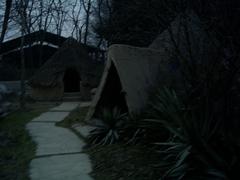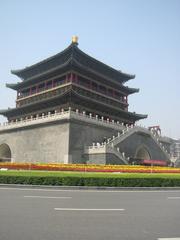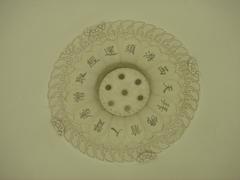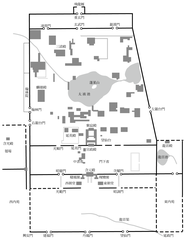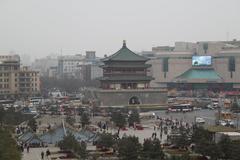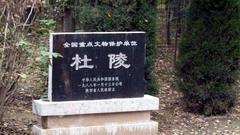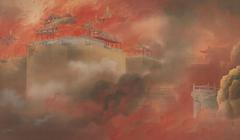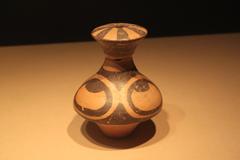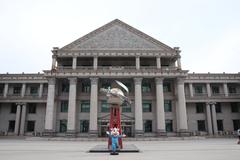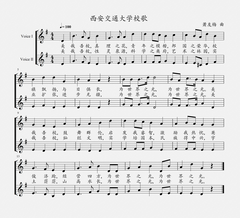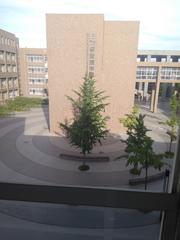Xi'An University Of Science And Technology
Xi’an University of Science and Technology Visiting Guide: Hours, Tickets, and Nearby Attractions
Date: 14/06/2025
Introduction
Xi’an University of Science and Technology (XUST), located in the heart of Xi’an, China, offers visitors an exceptional opportunity to explore both modern academic achievements and the city’s storied cultural heritage. With campuses set near some of China’s most revered landmarks—including the Big Wild Goose Pagoda, Huaqing Hot Springs, and the Terracotta Army—XUST serves as an ideal base for travelers keen to experience the region’s blend of education, history, and tradition.
This visiting guide provides a comprehensive overview for anyone planning a trip to XUST and its surrounding attractions. Inside, you’ll find details on campus layouts, accessibility, transportation options, ticketing information, opening hours, nearby historical sites, cultural events, and practical travel tips. Whether you’re a history buff, a cultural explorer, or an academic visitor, this guide is designed to help you make the most of your journey to Xi’an.
For more details, please refer to the official XUST website, the Big Wild Goose Pagoda visitor page, and the Terracotta Army visitor guide.
Contents
- Introduction
- Campus Layout and Locations
- Yanta Campus
- Lintong Campus
- Nearby Historical Sites
- Big Wild Goose Pagoda
- Huaqing Hot Springs
- Terracotta Army
- Practical Visitor Information
- Visiting Hours & Tickets
- Accessibility
- Transportation
- On-Campus Navigation
- Cultural Events and Activities
- Visual Highlights
- FAQ
- Conclusion
Campus Layout and Locations
XUST operates two primary campuses: the historic Yanta Campus and the modern Lintong Campus, covering a combined area of over 1,080,000 square meters. Each campus seamlessly blends traditional Chinese architectural elements with innovative modern facilities, creating a diverse and inspiring environment for both learning and sightseeing (besteduchina.com).
Yanta Campus
Situated in southern Xi’an, the Yanta Campus is a short walk from the renowned Big Wild Goose Pagoda. This proximity allows visitors to pair a campus tour with a visit to the pagoda—one of Xi’an’s most significant UNESCO World Heritage Sites. The campus is characterized by elegant landscaping, tranquil walking paths, and a harmonious mix of traditional and contemporary architecture.
Lintong Campus
The Lintong Campus is located near two of Xi’an’s major attractions: Huaqing Hot Springs and the Terracotta Army. Its modern facilities and green spaces reflect XUST’s commitment to forward-thinking education and innovation. The campus makes a convenient stop for those planning to explore the ancient wonders of the region.
Visiting Xi’an’s Historical Sites Near XUST
Big Wild Goose Pagoda
The Big Wild Goose Pagoda, a masterpiece of Tang Dynasty architecture, was built in 652 AD to house Buddhist scriptures brought from India by the monk Xuanzang. Today, it is a UNESCO World Heritage Site and a symbol of Xi’an’s role in the Silk Road’s cultural exchanges. The pagoda complex includes the Da Ci’en Temple and beautifully landscaped gardens, offering a peaceful and spiritual retreat within the city.
- Hours: 8:00 AM – 7:30 PM
- Ticket Price: 50 RMB for adults (discounts for students and seniors)
- Access: Closest to the Yanta Campus; accessible by Metro Line 3 (Dayanta Station) and several bus routes
- Special Events: Cultural festivals and Buddhist ceremonies are held throughout the year
Big Wild Goose Pagoda visitor page
Big Wild Goose Pagoda official website
Huaqing Hot Springs
Located near the Lintong Campus, Huaqing Hot Springs is famous for its scenic beauty and imperial history. Once the royal bathing site for Tang Dynasty emperors, it features a series of historic pools, pavilions, and gardens. The springs are also known for seasonal cultural performances and festivals.
- Hours: 8:00 AM – 6:00 PM
- Ticket Price: Varies; discounts available for students and seniors
Terracotta Army
The Terracotta Army is one of China’s most extraordinary archaeological discoveries, consisting of thousands of life-sized warrior statues that were buried to protect Emperor Qin Shi Huang in the afterlife. The site includes multiple pits, a museum, and ongoing archaeological exhibits.
- Hours: 8:30 AM – 5:30 PM (April–October); 8:30 AM – 5:00 PM (November–March)
- Ticket Price: About 150 RMB for adults (discounts for students, seniors, and children)
- Guided Tours: Available in several languages, highly recommended for in-depth understanding
- Location: Approximately 40 km from downtown Xi’an; accessible by Tourist Bus Line 5 (No. 306) and taxi
Practical Visitor Information
Visiting Hours & Tickets
- Big Wild Goose Pagoda: 8:00 AM – 7:30 PM
- Huaqing Hot Springs: 8:00 AM – 6:00 PM
- Terracotta Army: 8:30 AM – 5:30 PM (April–October); 8:30 AM – 5:00 PM (November–March)
It is advisable to book tickets online in advance, especially during peak seasons, to avoid long queues. Discounts are available for students, seniors, and group tours. Check each site’s official page for the latest pricing and policies.
Accessibility
All major sites and both XUST campuses offer wheelchair access and facilities for visitors with mobility needs. Signage and information are provided in both Chinese and English.
Transportation
- To Yanta Campus: Easily reached via city buses, taxis, or Metro Line 3. Its central location makes it convenient for accessing other city attractions.
- To Lintong Campus and Terracotta Army: Served by Tourist Bus Line 5 (No. 306), which connects downtown Xi’an, Huaqing Hot Springs, and the Terracotta Army. The journey from city center takes about one hour.
On-Campus Navigation
XUST campuses are pedestrian-friendly, with clear bilingual signage. Bicycle rentals and shuttle services are available to facilitate movement across the campuses.
Cultural Events and Activities
Both XUST and the nearby historical sites regularly host cultural festivals, academic lectures, and public events. Visitors should check the university’s announcements and the official pages of nearby monuments for schedules, especially during Chinese holidays and festival seasons.
Visual Highlights
Capture the beauty of XUST’s landscaped gardens, traditional gateways, and innovative architecture, as well as the grandeur of Xi’an’s monuments. Early morning and late afternoon provide the best natural light for photography. Please respect privacy and avoid disrupting classes or ceremonies.
Frequently Asked Questions (FAQ)
Q: Are guided tours available at the university campuses?
A: Yes, guided tours can be arranged in advance through the university’s visitor center.
Q: Can I purchase tickets for the Terracotta Army on-site?
A: Yes, but it is recommended to book online in advance to avoid long lines, especially during weekends and holidays.
Q: When is the best time to visit these sites?
A: Spring (April–May) and autumn (September–October) offer comfortable weather and beautiful scenery.
Q: Is photography allowed at historical monuments?
A: Photography is typically allowed outdoors; indoor photography may be restricted in some areas. Always follow posted guidelines.
Q: Are the sites suitable for children?
A: Yes, all sites are family-friendly. Children under 1.2 meters often enter free of charge.
Conclusion
A visit to Xi’an University of Science and Technology opens doors to China’s illustrious past and present. The university’s campuses, set amidst some of China’s most important historical landmarks, create a unique cultural and educational experience. By carefully planning your visit—factoring in opening hours, ticketing options, accessibility, and transportation—you’ll ensure a seamless and enriching trip. Take advantage of guided tours, cultural events, and the visual splendor of these destinations to create lasting memories.
For interactive maps, expert narration, and personalized travel recommendations, consider downloading the Audiala app. Stay connected with official channels and social media for the latest updates and seasonal events.
Plan your visit today and immerse yourself in the dynamic blend of education, culture, and history that defines both XUST and the city of Xi’an.
